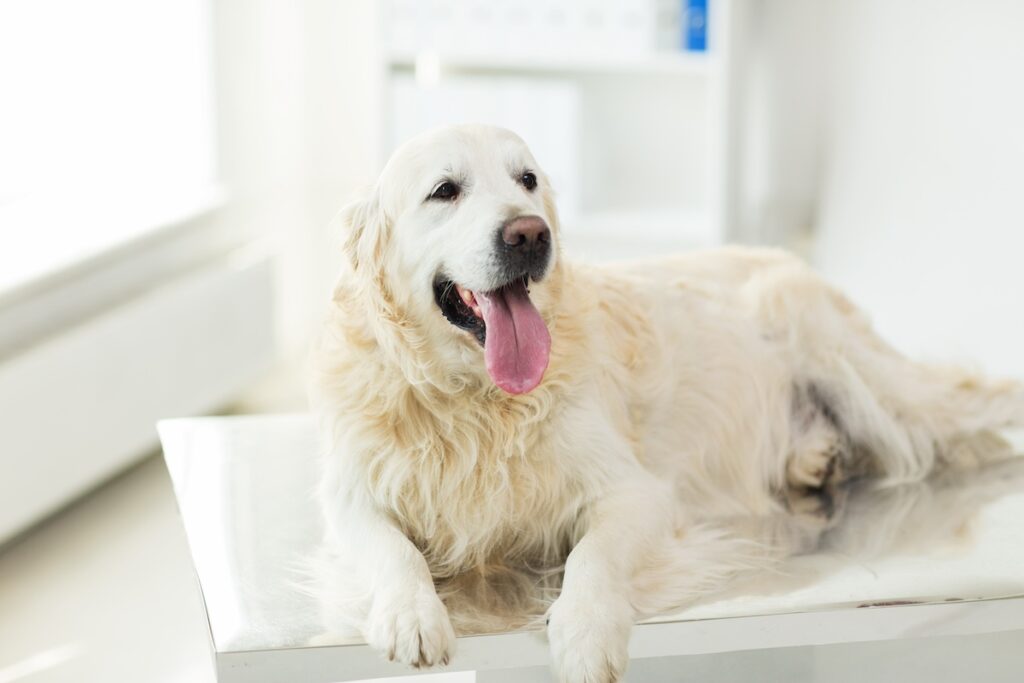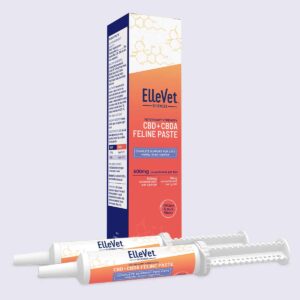A strange new bark, difficulty breathing, breathing that sounds like ‘roaring’, and a dry cough are all signs that something is wrong with your dog’s airway. These could be symptoms of a disease called Laryngeal Paralysis, or ‘Lar Par’. Lar par, or any issue that affects your dog’s airway, can be a true health emergency for dogs. If you notice these tell-tale signs, a visit to the veterinarian is in order, as the sooner your dog gets veterinary attention, the more likely they are to have a positive outcome.
Table of contents:
What is laryngeal paralysis?
Laryngeal Paralysis is a disease that affects the nerves that open the larynx. The larynx is what we call the ‘voicebox’; it is a group of individual plates of cartilage that sits at the top of the windpipe (or trachea) and works with the epiglottis and other cartilage flaps to open on each breath to allow air into the lungs and to close in order to prevent food or fluid from entering them.
When a dog is suffering from laryngeal paralysis, the nerves surrounding the larynx do not signal to the muscles and cartilage to open properly. Instead, when the dog tries to inhale, the cartilage on one or both sides of the trachea is sucked into the opening of the trachea, and the airway is narrowed. The dog struggles to breathe through this narrow opening, and their breaths can become noisy as air squeezes through the small opening.
Causes of laryngeal paralysis
There are two main types of laryngeal paralysis. It can either be acquired later in the dog’s life, without a definitive cause, which is the most common, or in rarer cases, it can be hereditary (congenital), meaning it is present at birth. In the fewest number of cases, laryngeal paralysis can be the result of trauma to the trachea, coming from a dog bite or other force injury.
Middle-aged to older Labrador retrievers, golden retrievers, German Shepherds, and giant dogs such as Great Danes are more susceptible to acquired Lar Par, but there is little known about what leads certain dogs to develop it. Congenital Lar Par is fairly rare and seems to affect Siberian Huskies, Rottweilers, and Bouviers de Flanders more than it affects other breeds.
Laryngeal paralysis is also frequently discovered as the early part of a broader syndrome of muscle weakening known as GOLPP or Geriatric Onset Laryngeal Paralysis and Polyneuropathy. GOLPP is thought to be gene-based, though the specific causes are not known. Dogs with GOLPP will experience laryngeal paralysis but can then progress to developing problems with the esophagus. This puts the dog at greater risk of having difficulty swallowing and potentially aspirating food or water into the lungs, which can lead to an infection called aspiration pneumonia. GOLPP eventually leads to diminished nerve function in general and frequently affects the rear legs and ability to stand and walk.
Symptoms
All of the symptoms of laryngeal paralysis can emerge slowly over the course of months or even years before it is apparent that your dog is having breathing difficulties.
Struggling to breathe is the most prominent symptom of Lar Par and the one that usually leads to a veterinary exam. A dog might pant more, with their lips pulled back and tongue hanging out, as they are trying to take in enough air. A characteristic symptom is stridor, or a roaring noise that comes when the dog takes a breath. This is caused by air flowing through the narrowed windpipe. They might also have a change in their bark, choke or gag when eating or drinking, or have difficulty with exercise or extreme heat because they can’t adequately cool off by panting. This difficulty breathing can lead to anxiety and other stress for your dog, which, unfortunately, will cause them to pant even more rapidly, but they still won’t be able to bring in enough air. Any breathing emergency can be dangerous as it can lead to respiratory failure and even death.
If your dog has difficulty breathing, is excessively panting even if they are not overheated, or has gums that have turned blue or purple, you should bring them to the veterinarian as this could be an emergency situation.
Diagnosis
Your veterinarian will assess your dog given their symptoms and breed history. They will probably run a full panel of blood tests and do chest x-rays. If it seems like laryngeal paralysis could be the cause of their respiratory distress, they might have to sedate the dog in order to perform an exam of the larynx. The veterinarian will look to see if the cartilage above the dog’s windpipe moves when they take a breath or if one or both sides of cartilage is frozen in place and obstructing the airway.
Treatment
Neither Lar Par nor GOLPP can be cured, but they can be managed. As laryngeal paralysis is progressive, in its early stages there are ways to alleviate the stress and discomfort that can come with the difficulty of opening a full airway.
Some early options are:
- Limiting exercise. A dog with Lar Par will become winded easily and can struggle with any exertion.
- Avoiding time in hot climates to prevent overheating. Older dogs with Lar Par are especially susceptible to overheating, which can potentially lead to life-threatening heat stroke or death. Keep your dog inside in a cooler environment during the heat of the day.
- Avoiding tight-fitting collars that could put pressure on the airway. A harness is a good alternative. An easy walk harness is a great example.
- Reducing stress. Stressing/anxiety can lead to your dog going into an “episode” or “fit” of panting, gagging, choking, breathing difficulties. Giving ElleVet Hemp CBD + CBDA helps calm dogs in high stress situations, decreasing the chances of your dog going into an “episode”
Once the paralysis progresses and these measures are no longer effective, there is a surgical treatment available. It is called ‘tie-back surgery’ or Unilateral Arytenoid Lateralization, and it involves using permanent stitches to hold one of the cartilages open permanently. It is a minimally invasive and highly effective surgery.
Surgical outcomes
Most dogs have a very successful outcome with this surgery, immediately seeing relief from their breathing difficulties and measurably improving their quality of life.
There are a few possible complications to be aware of, however, the greatest being an increased incidence of aspiration pneumonia, because tying back half of the protective cartilage can allow food and fluid to enter the lungs. Precautions that can be taken to help prevent aspiration include giving small drinks of water at a time and small amounts of canned food. Swimming should be avoided as dogs could breathe in water as they swim.
After tie-back surgery, your dog might have a cough or gag a bit while eating. These should fade away over time post-surgery. It is important to monitor your dog for any sign of aspiration as it can lead to pneumonia. Signs of aspiration pneumonia include persistent cough, fever, lethargy, and nasal discharge. Any of these events in a dog who has had tie-back surgery are cause for a veterinary visit. Treatment for aspiration pneumonia usually consists of a course of antibiotics.
Conclusion
Many dogs with Lar Par go undiagnosed until their breathing difficulties become acute due to the slow onset of the symptoms. There are successful medical and surgical interventions that can help ease your dog’s respiratory difficulties before it becomes a life-threatening situation. With careful monitoring and treatment, your dog can continue to enjoy a good quality of life. Being aware of the progression of this disease and its symptoms can help you to get your fur friend the treatment they need in order to continue leading a happy and fulfilling life.
Sources:
https://www.acvs.org/small-animal/laryngeal-paralysis/
https://www.petmd.com/dog/conditions/respiratory/c_dg_laryngeal_disease









